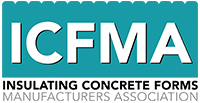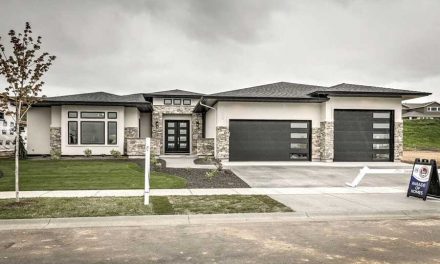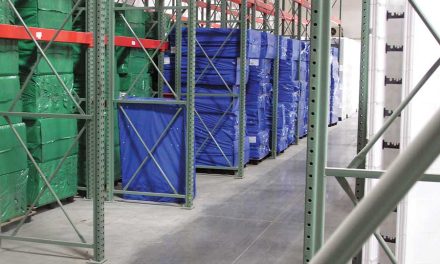NO
You may have heard people say that a house has to breathe in order to be healthy. So when we talk about creating an airtight home, or structure, that may sound like a bad thing, but in reality it is critical to achieving ultra energy-efficiency. So, you ask, how do I overcome my fears – especially when my contractor is telling me that I need to bring in “fresh air,” or I am reading about Energy Recovery Ventilators (ERV) or Heat Recovery Ventilators (HRV)’s?
One of the true secrets to energy efficiency is how airtight you can make the structure. This is also one of the areas that is most misunderstood about energy efficient construction.
Basically, you want to tighten the structure down as tight as you can possibly get it, but you’re still going to have a certain amount of air leakage through the windows and the doors.
At Energy Wise, our rule of thumb is that if you have at least 10% glass to wall ratio. In other words, if you have 4,000 sq. ft. of wall, you have to have at least 400 sq. ft. of glass—and it’s operable glass not fixed glass—that you have enough natural leakage in the house. Assuming, of course, that you don’t have anything excessive in there, like a commercial dryer or something of the sort. In nearly every case, if you meet the 10% glass-to-wall ratio, you will have enough natural leakage into the house that you don’t need to use an any sort of air-to-air heat exchanger.
I talk to people every day that are concerned about the airtightness of the houses they’re fixin’ to build, and whether or not they’re going to suffocate themselves, and they want to get my advice on whether or not to put in an ERV or HRV system. I have to explain to them that with the way that houses are constructed today, even if we did everything perfect, and got it as tight as humanly possible, there would still be enough leakage through the windows and doors that they would not need, in most cases, an HRV or ERV system.
The reason that happens is because the average house that we see will have somewhere between a 20% to 30% glass-to-wall ratio. And as long as you have that 10% minimum, there’s enough natural leakage in the house that you will not need any kind of additional mechanical ventilation system.
If you install an air-to-air heat exchanger, especially in hot and humid or polluted climates, you’re just asking for trouble. In fact, mechanical ventilation is a real problem if you put it into an Energy-Wise engineered house. I get real tickled when they call them fresh-air-to-air heat exchangers, because the air in Dallas, Texas certainly isn’t fresh—and in most parts of the country, it’s the same situation.
It’s not fresh air. And not only is it polluted air, but it’s very humid air in most areas of the country. Why bring in additional outside moisture or polluted air? There’s no need. There’s enough leakage through windows alone to make up for any air exhausted through bathroom or kitchen venting. Don’t bring polluted, hot, humid outside air into a structure just because somebody thinks that you might be building this structure too tight.
If there is a situation where it’s too tight, we will come back and alert the homeowner that they have too much fixed glass, and that they should look at some kind of air exchanger. What we like to recommend in those situations is “ventilation on demand.” What ventilation on demand is, you’re going to monitor the air quality with a CO2 sensor, and that CO2 sensor is designed so that if it detects a buildup of CO2 to unacceptable levels, then it will send a signal to a mechanical damper that is tied to the return of the unit and open that damper up to allow air to come in and “freshen up” the air. Then the mechanical system cuts off. You never have air just automatically coming in, which most systems are designed to do.
Richard Rue is the founder of EnergyWise Structures. He can be reached via his website at www.energywisestructures.com.
YES
Concrete and ICF buildings provide a key element in control of the indoor environment and air quality. Never before has a building envelope been able to be constructed, with such ease, and with near zero infiltration rates. This results in a building which can separate indoor and outdoor air volumes. Effectively, the building functions as a “plastic bag”.
I do a lot of forensic investigations on ICF homes, and what I’ve often found is that inside, they have higher mold counts and lower air quality than outdoors.
These contaminants come from many different sources. Cleaning products, household chemicals, or paints stored in the utility room which can produce high localized concentrations of dangerous air born contaminants. Dust, pet dander, and cigarette smoke also accumulates unless properly vented to the outside.
Luckily, it’s easy to eliminate these pollutants. Air exchangers, Energy Recovery Ventilators (ERV) or Heat Recovery Ventilators (HRV), can help ensure that you and your family have a healthy indoor air quality.
HRV/ERV technology is typically utilized to control humidity, and almost all installations include humidistats, or other air quality sensors to control indoor humidity and/or air quality levels.
Simple activities, like bathing, can raise humidity throughout the home to levels which readily support fungal growth, if not properly vented. Furnaces, gas stoves, and even houseplants can create excess humidity or contaminates. Spring cleaning with bleaches and chemical solutions, which are spread over large surface areas and evaporate quickly into the air creating “spikes” in indoor air contaminate levels.
Air exchangers also help by moving air within the structure, which serves two important functions. First, it reduces localized elevated humidity and/or contaminant levels. Smaller enclosed spaces such as closets, baths and laundry rooms, tend to have elevated humidity levels comparative to areas such as second bedrooms.
Secondly, air circulation helps avoid the “heat and humidity stack effects.” Heat and humidity rises, so two+ story ICF homes sometimes end up with top floor temperatures 10 degrees higher and humidity levels 30% greater than the lowest floor level. Properly ducted air exchanger can help ensure the entire home has adequate air distribution to alleviate such issues.
If the structure has an airtight roofing membrane (commonly installed with ICF buildings), air exchangers also play an
important role eliminating carbon dioxide buildup. As a basic human requirement, a fully sealed, airtight environment requires about 0.1 air changes per hour, based on approximate air volumes in
modern housing.
Code requirements dictate a much higher 0.3 air changes per hour on average. As the primary heat loss of a total ICF building is the air infiltration, lessening the effect of heat loss/gains is very important. Utilizing HRV/ERV technology can effectively get back up to 70% of this direct loss.
By using air exchangers to replace stale inside air with fresh outside air, which can easily be further purified with air scrubbing and/or filtering, we eliminate contaminants, reduce humidity, improve air circulation, and ensure carbon dioxide does not build up to unhealthy levels.
Mark Ross owns Architectural Residential Technologies, Inc., he can be reached through the company website www.arit.com.












